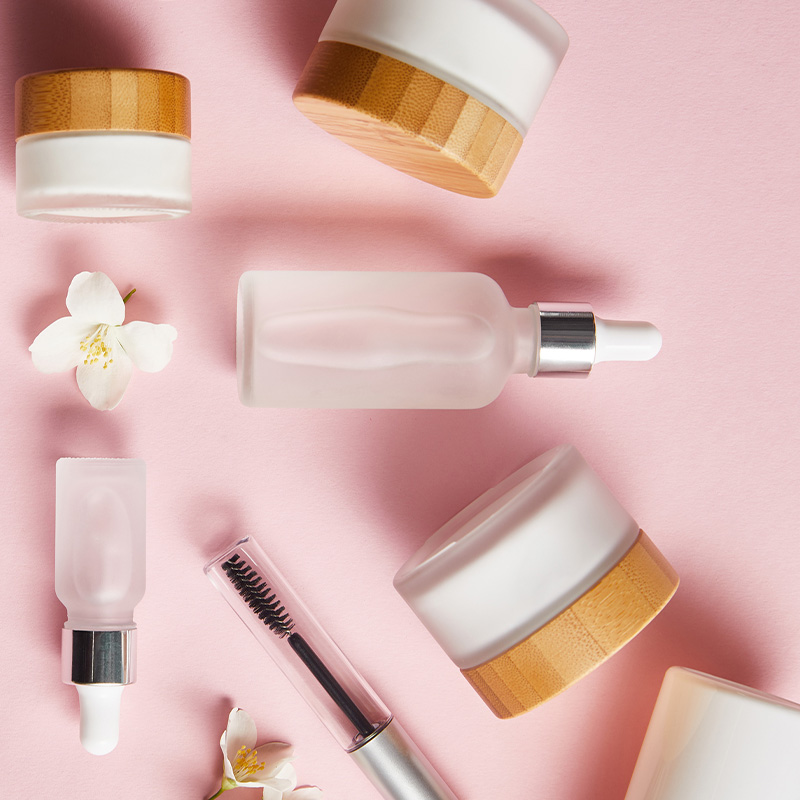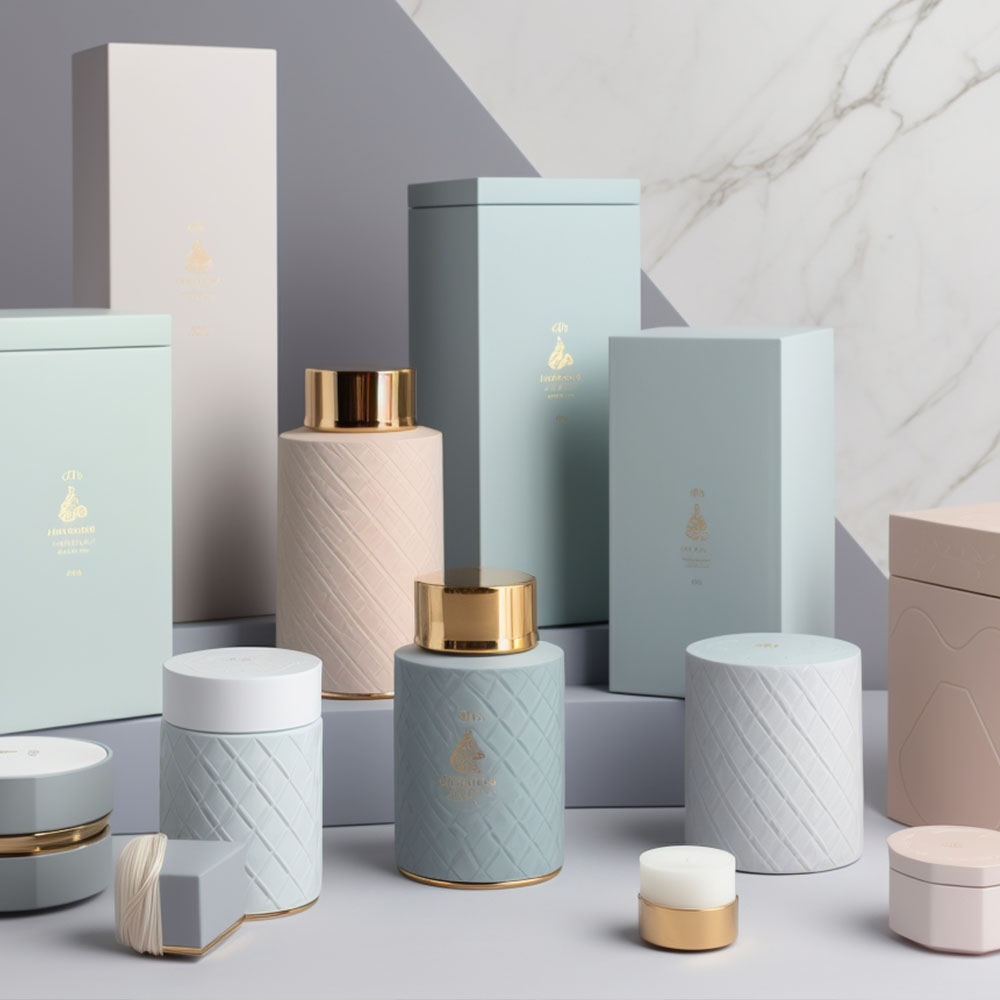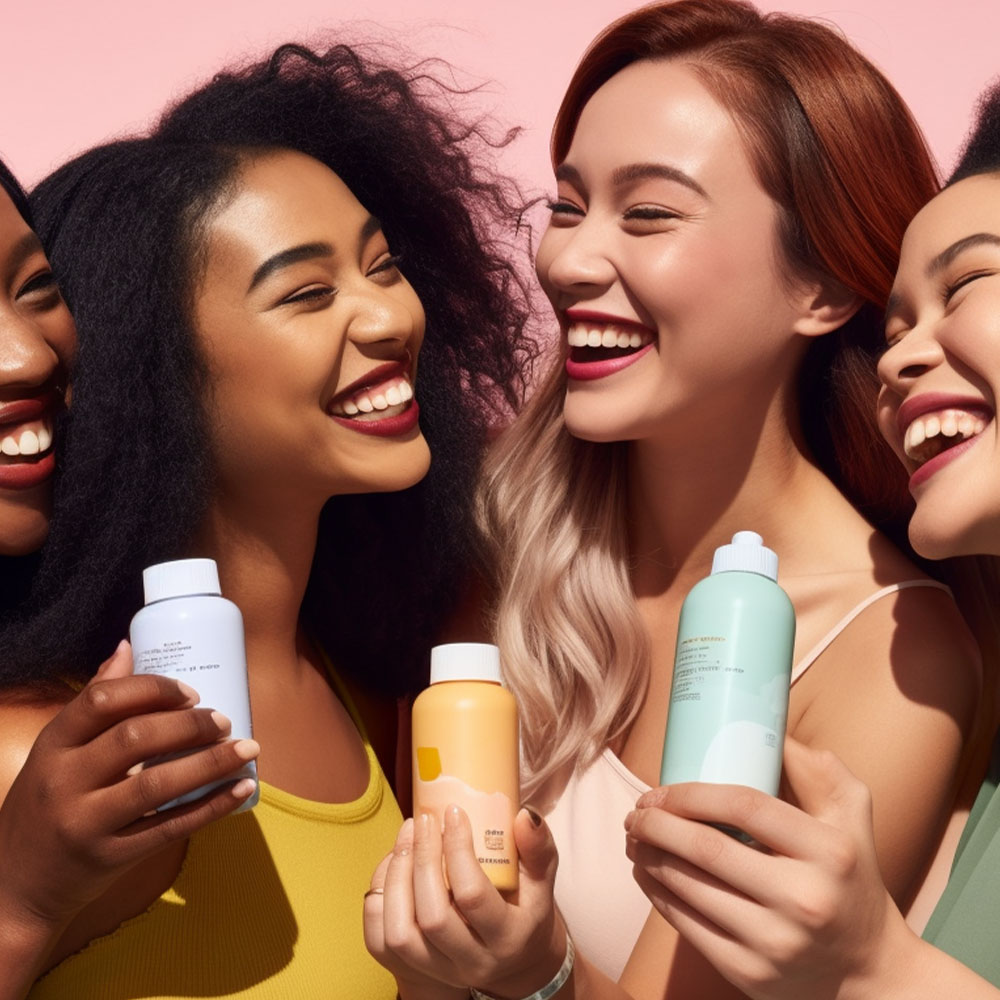
Scaling Your Beauty Brand: The Ultimate Guide
Picture this: You’re standing in front of a mirror, admiring your perfectly applied makeup. Your skin is glowing, and your hair is styled to perfection. Then, as you walk away, you see the beauty products on your vanity – each carefully selected based on their quality and effectiveness. Imagine that instead of being the consumer, you are creating those products. That’s right – you have developed a successful beauty brand that women worldwide trust and love.
Scaling a beauty brand from start-up to global success may seem impossible, but it can be achieved with the right strategy and mindset. This ultimate guide will explore everything from creating a solid brand identity to expanding into international markets. With our expert tips and insider knowledge, you’ll be well on your way to taking your beauty business to new heights. So grab your favorite lipstick, and let’s get started!
Defining Your Brand Identity
Creating a solid and consistent brand identity is crucial for any beauty brand looking to succeed in today’s competitive market. By defining your brand identity, you establish who you are as a company and communicate that message clearly to your audience.
To begin creating consistency, start by identifying your target demographic. Who do you want to reach with your products? What age range, gender, or lifestyle do they represent? Answering these questions will help you tailor your messaging and branding efforts toward this group.
Once you have established your target demographic, it’s time to develop a unique visual identity that speaks directly to them. This includes everything from the colors and fonts used in your logo to the packaging design of your products. Creating a visually appealing aesthetic will attract potential customers and keep them coming back for more.
By creating consistency throughout all aspects of your brand – from messaging to visuals – you can build trust with consumers and establish yourself as an authority within the industry. Remember: a well-defined brand identity gives customers something tangible to connect with and helps set them apart from competitors.
Incorporating these tactics into your overall strategy can pave the way for long-term success. By targeting specific demographics and creating consistent branding efforts, you’ll lay the foundation for building a devoted customer base that will stand by your brand through thick and thin. So take the time to define what sets you apart – it could make all the difference in securing future growth opportunities without sacrificing authenticity or innovation!
Establishing A Strong Online Presence
When scaling a beauty brand, I believe in SEO optimization and social media strategies. With the proper optimization techniques, you can ensure the right audience sees your brand – it’s critical to success. In addition, leveraging social media helps you build customer relationships and increase awareness, so it’s worth investing in. And, of course, SEO optimization helps to get your brand noticed by search engines and increase visibility.
Scaling Your Beauty Brand with SEO Optimization
Are you tired of your beauty brand not appearing on the first page of Google search results? Don’t worry; you’re not alone. Many start-ups struggle with SEO optimization when establishing a solid online presence. But fear not! With some keyword research and on-page optimization tactics, your beauty brand can be well on its way to dominating the digital world.
Firstly, let’s talk about keyword research. It’s essential to understand what keywords your target audience is searching for so that you can optimize your website accordingly. Use tools like Google AdWords Keyword Planner or SEMrush to determine which keywords are relevant and have high search volumes. Once you know this information, incorporate these keywords into your website copy, meta descriptions, and title tags.
Secondly, don’t forget about on-page optimization. This includes optimizing each web page by ensuring unique titles and meta descriptions that include targeted keywords. Make sure all images have descriptive alt attributes as well. Additionally, improve site speed by compressing image files and enabling browser caching for faster loading times.
In conclusion, while many factors are involved in successful SEO optimization, implementing effective keyword research and on-page optimization techniques will undoubtedly improve your visibility in search engine rankings. Keep experimenting with different strategies until you find what works best for your beauty brand – innovation is critical! Finally, consistency is crucial; consistently creating quality content using proper SEO tactics will ultimately lead to long-term success.
Social Media Strategies
Now that we’ve covered the importance of keyword research and on-page optimization let’s focus on social media strategies. Social media platforms are an excellent tool for building brand awareness, engaging with customers, and driving traffic to your website. One effective way to establish a solid online presence is through collaborations with influencers or other brands in the beauty industry. This approach can help you reach a broader audience and gain credibility within the community.
Paid advertising tactics are also valuable for promoting your beauty brand on social media. Platforms like Facebook and Instagram offer various advertising options, such as sponsored posts or paid promotions. These methods allow you to target specific audiences based on demographics, interests, and behaviors while providing measurable results.
It’s essential to remember that social media algorithms are constantly changing, so staying up-to-date on trends and best practices is crucial. In addition, engaging with your followers by responding to comments and messages can improve customer loyalty and create a sense of community around your brand.
In summary, social media collaborations and paid advertising will strengthen your online presence by increasing visibility among potential customers. In addition, consistently staying informed about changes in social media algorithms and connecting with followers will enhance overall engagement levels across all channels. Finally, innovation is critical when establishing a successful digital footprint for your beauty brand!
Scaling Your Beauty Brand: Building A Loyal Customer Base
As a beauty brand strategist, you understand the power of building a loyal customer base. Your customers are not just buying products but investing in your brand and what it stands for. To build this loyalty, you must create meaningful connections with your audience beyond selling them a product.
One way to do this is by developing customer retention strategies that keep your clients returning for more. This may include offering personalized experiences like customized skincare consultations or exclusive access to new product launches. In addition, you can foster trust and encourage repeat purchases by making your customers feel seen and appreciated.
Another critical factor in building brand loyalty is consistency. Make sure every touchpoint – from social media posts to packaging design – reflects your brand’s values and messaging. Consistency breeds familiarity, which leads to trust and ultimately drives sales.
Finally, please don’t underestimate the value of community-building in fostering loyalty. Encourage user-generated content on social media platforms like Instagram or TikTok by creating branded hashtags or hosting giveaways that invite followers to participate. When consumers feel connected to a larger community centered around your brand, they’re more likely to become lifelong advocates who recommend your products to others.
Customer Retention Strategies:
- Offer personalized experiences
- Provide excellent customer service
- Reward loyal customers with incentives
- Continuously innovate with new product offerings
When it comes down to it, building brand loyalty takes time and effort but pays off in dividends as returning customers drive revenue growth over the long term. Focus on creating authentic connections with your audience through consistent messaging, personalized experiences, and community-building initiatives while continuously innovating with new products and services that meet their evolving needs. With these strategies, you’ll be well-positioned for global success as a beloved beauty brand for years!
Developing A Product Line That Stands Out
I’m a beauty brand strategist and here to help you develop a product line that stands out. My advice? Start by researching the market and understanding what potential customers are looking for. Then, create unique products that offer something special and valuable. Once the products are sorted, build brand recognition and get the word out about your business. With the right strategy, you can go from start-up to global success!
Scaling Your Beauty Brand: Researching The Market
Are you ready to take your beauty brand to the next level? Developing a product line that stands out requires extensive research on the market, competitors, and target audience. As a beauty brand strategist, I understand how crucial it is to stay ahead of the game in this ever-changing industry.
Competitor analysis is essential when creating a unique product line. Understanding what your competitors are offering will help identify gaps in the market and allow you to fill them with innovative products. In addition, you can determine what makes your brand different from others in the same space by conducting thorough research.
Target audience research is equally important as knowing who your customers are will influence everything from packaging design to marketing campaigns. It is vital to know their needs, preferences, age range, and lifestyle habits. A deep understanding of your ideal customer persona allows for better communication and connection through all aspects of branding.
In conclusion, researching the market is fundamental when developing a product line that stands out. Competitor analysis provides insight into untapped opportunities, while target audience research helps create an emotional connection between the consumer and the brand. Finally, innovation lies at the heart of any successful beauty business – make sure yours stays relevant by staying up-to-date with current trends and anticipating future ones.
Scaling Your Beauty Brand: Creating Unique Products
As a beauty brand strategist, I understand the importance of developing a product line that stands out. One key element in achieving this is creating unique products through effective product differentiation. This means identifying areas where your brand can excel and stand apart from others in the market.
One way to differentiate your beauty products is by sourcing high-quality ingredients. Consumers are becoming increasingly conscious about what they put on their skin, so incorporating natural or organic ingredients can be a strong selling point. Additionally, using new or innovative ingredients not commonly found in other brands’ products can help set yours apart and attract consumers who value uniqueness.
Another aspect of creating unique products is considering packaging design. Your packaging should reflect your brand’s personality and target audience while being eye-catching and functional. A thoughtful package design can make all the difference when it comes to catching the attention of potential customers browsing shelves or scrolling online.
In summary, creating unique products involves differentiating yourself from competitors through ingredient sourcing, packaging design, and innovation. By understanding what makes your brand unique and utilizing these elements intentionally, you can create a product line that stands out in an otherwise crowded market. With careful consideration of every detail, you’ll be able to offer something genuinely one-of-a-kind to consumers who crave innovation in their beauty routines.
Scaling Your Beauty Brand: Building Brand Recognition
As a beauty brand strategist, I aim to help companies develop a product line that stands out from competitors. To achieve this, it’s essential to create unique products and build strong brand recognition. This involves utilizing offline and online channels to establish your brand’s identity and consistently communicate its messaging.
Consistent branding across all touchpoints is one effective way to build brand recognition. From your packaging design to social media posts, every aspect of your brand should reflect the same visual identity and tone of voice. This helps consumers recognize your brand quickly and builds trust over time. Additionally, incorporating key messaging into all marketing materials can reinforce what sets your brand apart from others in the market.
Another crucial component of building brand recognition is leveraging different channels effectively. Offline strategies such as experiential events or collaborations with influencers can increase visibility and attract new customers who may not have discovered your brand otherwise. Online strategies like search engine optimization (SEO) or social media advertising can target specific audiences and drive traffic to your website or physical store locations.
Building brand recognition takes time and effort but can pay off in the long run when creating a loyal customer base. By consistently communicating your message and utilizing various channels for promotion, you can differentiate yourself from competitors while increasing awareness of your unique product line. As a beauty brand strategist, I believe that developing innovative products and strong branding is essential to achieving success in the industry.
Crafting A Compelling Brand Story
Now that you have developed a great product line, it’s time to craft a compelling brand story. Storytelling techniques are essential in creating an emotional connection with your target audience. When done right, your brand messaging can evoke feelings of desire and loyalty toward your products.
To start crafting your brand story, consider what makes your beauty brand unique. For example, what inspired the creation of your products? Was there a personal experience or journey behind it? Then, use these elements to create a narrative that deeply resonates with your target audience.
One effective way to incorporate storytelling into your branding is using visuals such as images and videos. These visual aids help bring your brand story to life and make it more relatable for consumers. You can also use social media platforms like Instagram and Facebook to share snippets of your brand story regularly.
Crafting a compelling brand story takes time and effort, but when done correctly, it creates an emotional connection between your brand and its customers. By incorporating storytelling techniques and understanding the importance of emotional connections in marketing, you can take the first step toward building a loyal customer base for global success.
Leveraging Social Media For Growth
How can we leverage social media for growth? It’s simple. By utilizing the power of social media analytics, beauty brands can strategize and optimize their online presence. Through this process, they can identify what content resonates with their audience, determine which platforms are most effective, and adjust accordingly.
In addition to analyzing data, influencer partnerships have become critical in driving brand awareness and sales. Collaborating with influencers allows beauty brands to tap into new audiences and build credibility through trusted advocates. But it’s not just about finding any influencer – partnering with individuals who align with your brand values is crucial for authenticity.
Another way to engage customers on social media is by leveraging user-generated content. For example, encouraging followers to share photos using branded hashtags or participating in challenges fosters community and provides authentic content that can be repurposed for marketing purposes.
Finally, paid social advertising offers another avenue for growth on social media. With advanced targeting options on platforms like Facebook and Instagram, beauty brands can reach specific demographics based on interests and behaviors. Whether promoting a new product launch or boosting overall visibility, paid social advertising has proven successful for many beauty brands looking to scale their business through digital channels.
Beauty brands can grow their following and drive sales by incorporating these tactics into a comprehensive social media strategy. But, remember- success isn’t achieved overnight; consistent effort and measurement are critical factors in achieving long-term results.
Expanding Your Reach Through Influencer Marketing
As a beauty brand strategist, you always seek ways to expand your reach and connect with new audiences. One of the most effective methods for doing this is through influencer partnerships. By teaming up with individuals who have large followings on social media platforms like Instagram, YouTube, and TikTok, you can tap into their audience and gain exposure to your products.
But it’s not enough to partner with an influencer – you must create compelling campaigns that resonate with their followers. To do this, research potential influencers in your niche and find those whose values align with your brand message. Then, work with them to develop content that showcases your product in an authentic and engaging way.
Once you’ve identified the right influencers and developed compelling content, it’s time to launch your campaign. This might involve sponsored posts on social media or collaborations on YouTube videos. Whatever approach you choose, be sure to track engagement metrics to measure each campaign’s success.
Influencer marketing can be a powerful tool for expanding your reach as a beauty brand. By partnering with the right people and creating effective campaigns, you can connect with new audiences and build a loyal following over time. So don’t overlook this valuable strategy as you work towards global success!
Navigating International Markets
Expanding your beauty brand into international markets can be a daunting task. However, it is possible to navigate these markets successfully with the right strategies and tactics. One key consideration when entering new markets is understanding customs regulations. Each country has its own set of rules that must be followed for importing and exporting goods. Failure to comply with these regulations could result in costly fines or even legal trouble.
Another essential factor to consider is cultural adaptation. What works well in one market may not necessarily resonate with consumers in another culture. Therefore, conducting thorough research on the local customs and traditions before launching your products is crucial. This includes everything from packaging design to marketing messaging.
To help streamline this process, creating a table comparing different aspects of each target market can be incredibly helpful. For instance, you could create a chart outlining each country’s most popular beauty trends alongside their respective skincare routines. Additionally, you might include information about common ingredients used in beauty products within each region.
Ultimately, by taking the time to understand customs regulations and adapting your brand’s message accordingly, you can make informed decisions as you expand globally. Remember: every step taken towards global growth should bring you closer to serving customers who share an interest in innovation-driven solutions that are both effective and culturally appropriate for them- whether located down the street or across oceans!
Scaling Your Production And Operations
I’m sure you’re familiar with the idea of outsourcing production. It’s a meaningful way to scale your beauty brand and can help you save time and money. Automation strategies are also a great way to scale– they can help you become more efficient in your operations. And, of course, don’t forget about quality control measures. These are essential for any beauty brand, no matter the size. We must ensure we’re providing our customers with the highest quality products. All of these tactics, when used together, can help your beauty brand become a global success. Let’s discuss how to implement them effectively.
Outsourcing Production
Outsourcing production is a critical step in scaling your beauty brand. It allows you to focus on the core aspects of your business while delegating the manufacturing process to experts. This approach provides cost-effective options and helps maintain quality control, ensuring every product meets your high standards.
When outsourcing production, partnering with reputable manufacturers who share your vision for excellence is essential. Conduct thorough research and due diligence before selecting a vendor, considering factors like their track record and adherence to industry regulations. By working with reliable partners, you can build customer trust while securing long-term growth for your business.
One potential challenge when outsourcing production is maintaining consistency across multiple vendors or factories. Establish clear guidelines and procedures regarding materials sourcing, manufacturing processes, and quality control measures to address this concern. In addition, regular communication with outsourced partners will help ensure that everyone remains aligned and committed to delivering consistent results.
In conclusion, outsourcing production offers significant advantages for beauty brands looking to scale rapidly without sacrificing quality or efficiency. With careful planning and attention to detail during the selection process, you can find reliable partners who provide cost-effective options while upholding rigorous quality standards throughout the manufacturing process. As always, remain flexible and adaptable as you navigate these waters – innovation is critical!
Scaling Your Beauty Brand: Automation Strategies
As a beauty brand strategist, your ultimate goal is to scale your operations and production while maintaining quality control. One way to achieve this is through the implementation of marketing automation and operational automation strategies. Marketing automation allows you to streamline your marketing efforts by automating email campaigns, social media posting, and lead-generation tasks. This frees up time and resources for other business aspects requiring more attention.
On the other hand, operational automation involves using technology to automate various processes within your manufacturing facility or supply chain. For example, implementing a warehouse management system can help optimize inventory levels and reduce waste. Using robotics in certain production areas can also speed up the process while reducing errors.
Incorporating these automation strategies into your business model can improve efficiency and productivity without sacrificing quality. However, it’s important to note that not all tasks should be automated – some require human oversight and decision-making. Therefore, finding the right balance between automation and manual labor is crucial.
To ensure success with these strategies, it’s essential to have a clear understanding of your goals and objectives. Determine which tasks are best suited for automation based on complexity, frequency, and potential impact on quality. Regularly review data analytics to assess performance metrics such as cost savings and customer satisfaction rates.
Scaling your production and operations requires innovation and adaptability – qualities that align perfectly with the beauty industry’s ever-changing landscape. By embracing marketing automation and operational automation strategies, you can create an efficient workflow that maximizes productivity while maintaining high-quality standards across the board.
Scaling Your Beauty Brand: Quality Control Measures
As a beauty brand strategist, scaling your production and operations requires more than implementing automation strategies. Ensuring the quality of your products is equally essential to maintain customer satisfaction and loyalty. Quality control measures play a crucial role in achieving this goal.
One way to ensure quality control is through process optimization. By analyzing each step of your manufacturing process, you can identify areas needing improvement or adjustments to prevent defects or errors. This includes testing raw materials before they enter the supply chain and performing regular inspections during production.
Supply chain management also plays a vital role in maintaining quality control. Working closely with suppliers to ensure they meet your standards for sourcing and handling materials and monitoring their performance regularly can help reduce issues that might affect product quality down the line.
Regularly reviewing and updating standard operating procedures (SOPs) is another crucial aspect of quality control. SOPs provide guidelines for all aspects of your business – from manufacturing processes to packaging and shipping – ensuring consistency across various tasks and reducing the risk of errors.
In conclusion, incorporating effective quality control measures into your business model goes hand-in-hand with scaling up operations. Therefore, it’s essential to prioritize both efficiency and high-quality standards when developing strategies for growth while keeping innovation at the forefront of everything you do.
Measuring Success And Continuously Improving
When it comes to scaling your beauty brand, tracking metrics is essential. It’s important to know what’s working and what isn’t so that you can make informed decisions about where to put your resources. By keeping an eye on key performance indicators such as sales figures, customer acquisition costs, and social media engagement rates, you’ll better understand how your business is performing.
However, it’s not enough to track these numbers. It would be best to analyze customer feedback to continuously improve your products and services. Whether through surveys, online reviews, or social media comments, paying attention to what customers say will help you identify areas for improvement. This information can then be used to refine your offerings and ensure that you’re meeting the needs of your target audience.
One way to get more detailed customer feedback is by implementing a Net Promoter Score (NPS) system. This involves asking customers one simple question: “On a scale of 0-10, how likely are you to recommend our product/service?” Based on their response, they are classified as promoters (score 9-10), passives (score 7-8), or detractors (score 0-6). By analyzing this data regularly, you can gauge overall satisfaction levels among customers and take steps toward improving any issues raised.
In summary, measuring success requires both quantitative and qualitative analysis. Tracking metrics like sales figures is crucial for making informed business decisions, while analyzing customer feedback helps businesses stay relevant by addressing concerns promptly. In addition, implementing an NPS system provides valuable insights into overall satclients’ overall satisfaction levels, enabling strategists with actionable improvement plans. Keep these practices at the forefront when planning strategies for scaling up a beauty brand!
Conclusion
As a beauty brand strategist, scaling your business can be challenging. However, with the right strategies in place, it is possible to take your start-up to global success. By defining your brand identity and crafting a compelling story, you will attract loyal customers passionate about what you offer.
Building an online presence and leveraging influencer marketing will help expand your reach while developing unique products will set you apart from competitors. As you navigate international markets and scale production operations, measuring success and continuously improving will ensure long-term sustainability. With dedication and hard work, there’s no limit to where your beauty brand can go!
Let us help you build your beauty brand now. Click here.









